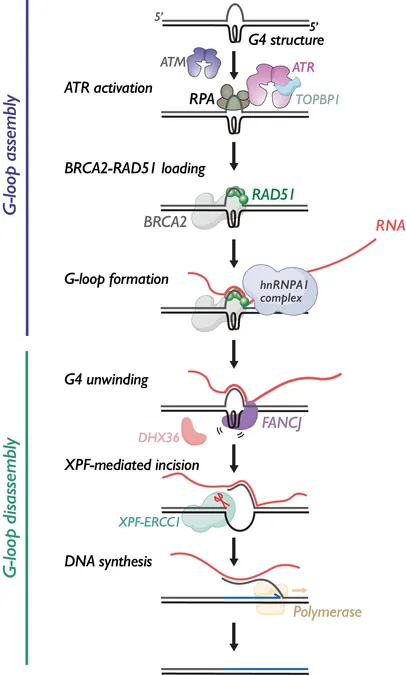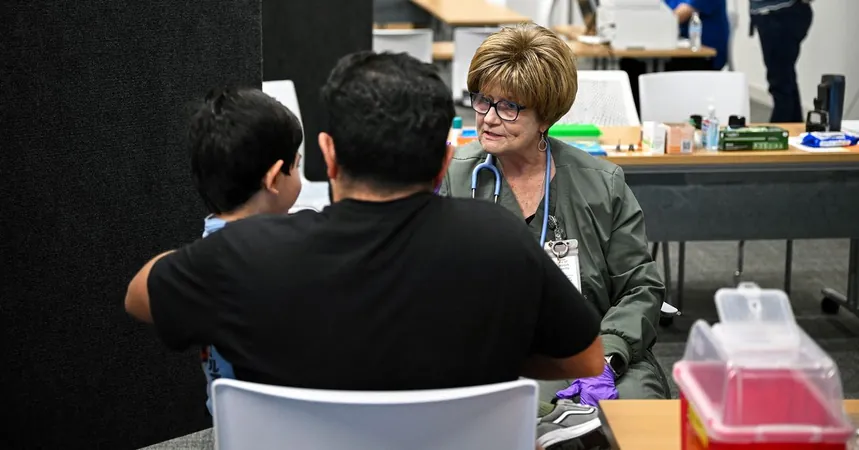
Unlocking the Secrets of DNA Knots: A Breakthrough in Genetic Protection
2025-06-12
Author: Yu
The Hidden Danger of G-Quadruplexes
When you think of DNA, you might visualize the classic double helix, but not all strands conform to this shape. In some cases, sections of our genetic material twist into complex structures known as G-quadruplexes (G4s), resembling tight knots. These formations are crucial in gene regulation, turning genes on or off, but if they remain tangled, they pose a significant threat to our genome.
A Revolutionary Discovery from Leading Researchers
In an exciting collaboration between the Knipscheer Group at the Hubrecht Institute and the Karolinska Institute, scientists have unveiled a remarkable mechanism that helps cells keep these DNA knots in check. Their groundbreaking findings, published in the journal Science, may pave the way for innovative treatments for diseases, including cancer.
Understanding the G-Quadruplex Structure
While the majority of human DNA remains in the classic double helix form, certain conditions allow single strands to coil into G4 structures. These knots frequently appear in regions rich in guanine (G), significantly influencing critical processes like transcription—the first step in turning DNA into RNA.
The Dark Side of G4s
Though G4s assist in regulating genes, their failure to untangle can lead to mutations, disrupted gene expression, and potentially fuel cancer or contribute to premature aging. Thus, it's vital for cells to have mechanisms to swiftly and efficiently unwind these knots.
Frog Extracts as Scientific Tools
To explore how cells manage to untangle G4 structures, researchers employed protein extracts from frog eggs (Xenopus laevis)—an ideal substitute replicating the cellular environment, rich with proteins essential for DNA replication and repair. This innovative approach allowed the team to introduce G4-structured DNA and meticulously monitor the untangling process.
RNA: The Unexpected Guardian of DNA
Intriguingly, the research revealed a new role for RNA in DNA protection. As first author Koichi Sato explains, RNA collaborates with DNA repair proteins to bind opposite the G4, forming a protective structure known as a "G-loop." This crucial intermediate not only aids in untangling the knot but also shields the genome from potential damage.
The Role of the G-Loop in Cell Health
The G-loop acts as a platform for additional proteins tasked with unwinding the G4 knots and reverting DNA back to its standard double helix configuration. Collaborators from the Karolinska Institute helped demonstrate that the G-loop is instrumental in addressing G4s throughout the entire genome.
A Surprising Response to DNA Lesions
Interestingly, the study uncovered that cells recognize G4s as DNA lesions, prompting a DNA damage response even when no actual damage exists. Group leader Puck Knipscheer noted the surprise in this finding, highlighting how this mechanism triggers rapid cellular action to prevent more significant issues down the line.
Harnessing G4 Knots to Combat Cancer
The insights gained from this G-loop mechanism not only enhance our understanding of DNA safeguarding but also open avenues for future cancer therapies. Given that many cancers are linked to defects in DNA repair and G4 structures are particularly prevalent in cancer cells, strategically targeting this knot-untangling mechanism could prove advantageous.
By amplifying the G4 knots or inhibiting their repair, researchers may devise selective methods to eradicate cancer cells. However, further investigation is essential to explore the potential of this approach in stalling cancer growth effectively.



 Brasil (PT)
Brasil (PT)
 Canada (EN)
Canada (EN)
 Chile (ES)
Chile (ES)
 Česko (CS)
Česko (CS)
 대한민국 (KO)
대한민국 (KO)
 España (ES)
España (ES)
 France (FR)
France (FR)
 Hong Kong (EN)
Hong Kong (EN)
 Italia (IT)
Italia (IT)
 日本 (JA)
日本 (JA)
 Magyarország (HU)
Magyarország (HU)
 Norge (NO)
Norge (NO)
 Polska (PL)
Polska (PL)
 Schweiz (DE)
Schweiz (DE)
 Singapore (EN)
Singapore (EN)
 Sverige (SV)
Sverige (SV)
 Suomi (FI)
Suomi (FI)
 Türkiye (TR)
Türkiye (TR)
 الإمارات العربية المتحدة (AR)
الإمارات العربية المتحدة (AR)